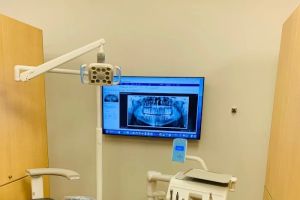Boot Menu Key for Dell: How to Access and Use It for System Management
- 1. Understanding the Boot Menu
- 2. Boot Menu Key for Dell: What You Need to Know
- 3. How to Access the Boot Menu on Dell
- 4. Common Boot Menu Issues and Solutions
- 5. Customizing the Boot Menu on Dell
- 6. When to Seek Dell Support
1. Understanding the Boot Menu
The boot menu is a crucial feature in any computer system, especially when managing hardware or installing new operating systems. It allows users to choose which device the computer should boot from, such as a hard drive, USB drive, CD/DVD, or network boot. For Dell users, understanding how to access and utilize the boot menu can be essential, especially when troubleshooting, reinstalling operating systems, or upgrading hardware. Having quick access to the boot menu can save you time and prevent unnecessary technical support calls.

COMPUTEK Dental Systems
5812 Venus Ave Suite 1, Fort Collins, CO 80525, USA
2. Boot Menu Key for Dell: What You Need to Know
The boot menu key for Dell computers allows users to quickly select a boot device without needing to enter the BIOS setup. This key is typically accessed during the startup process and is a simple yet powerful tool for those who need to boot from a different device, such as when installing or repairing an operating system. For most Dell laptops and desktops, the key to access the boot menu is usually F12, but this may vary slightly depending on the specific model or system configuration.
3. How to Access the Boot Menu on Dell
Accessing the boot menu on your Dell computer is a straightforward process, but timing is key. Here’s how you can do it:
- Step 1: Shut down your Dell computer completely.
- Step 2: Turn it back on and immediately start pressing the F12 key repeatedly as soon as the Dell logo appears on the screen.
- Step 3: You should be taken to the Boot Menu, where you can select the boot device from the list.
Remember, the key to press may vary slightly based on your specific model, so check your user manual if F12 doesn’t work.
4. Common Boot Menu Issues and Solutions
While accessing the boot menu is usually simple, there are some common issues users encounter. Here are a few and how to address them:
- Issue 1: The boot menu doesn’t appear after pressing F12.
Solution: Ensure you press F12 at the right moment after powering on your computer. If this doesn’t work, try resetting your BIOS settings or consult your manual for a different boot menu key.
- Issue 2: Unable to boot from a USB drive or CD/DVD.
Solution: Ensure that the device is correctly connected and is bootable. You may also need to change the boot order in the BIOS if it’s not showing up in the boot menu.
5. Customizing the Boot Menu on Dell
Customizing the boot menu can enhance your experience, particularly if you frequently boot from specific devices. While most Dell systems automatically show the boot menu options, you can adjust the boot order through the BIOS settings to prioritize certain devices. Here’s a basic guide to customizing your boot menu:
- Step 1: Press the F2 key during startup to enter BIOS settings.
- Step 2: Navigate to the Boot menu tab using the arrow keys.
- Step 3: Adjust the boot priority to set your preferred device (USB, CD/DVD, hard drive, etc.) as the first option.
- Step 4: Save your changes and exit BIOS.
Customizing the boot menu can save you time and make your computer’s boot process more efficient.
6. When to Seek Dell Support
If you're facing persistent issues with accessing the boot menu, booting from specific devices, or troubleshooting hardware failures, Dell's customer support can be an invaluable resource. Whether you need a deeper dive into BIOS settings or a repair for your Dell machine, Ninja Stik is your go-to source for expert advice and tools that help enhance your Dell experience. Visit our website for solutions and professional support on all Dell-related concerns.




























